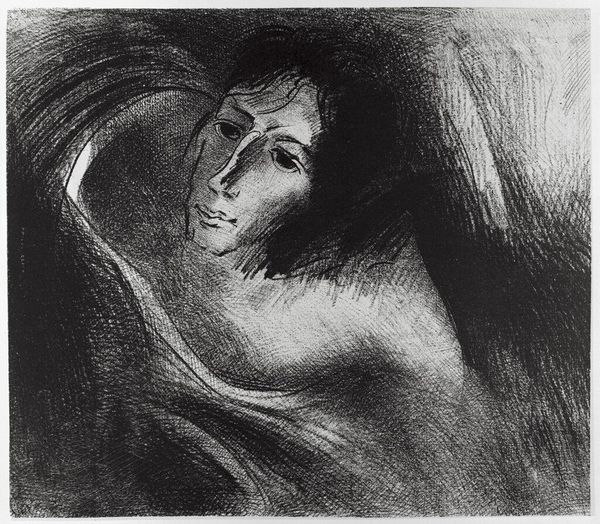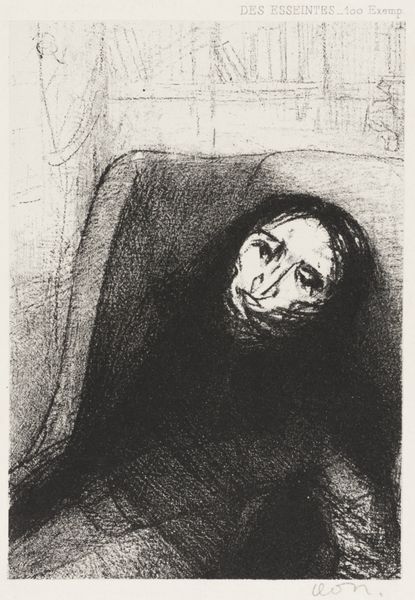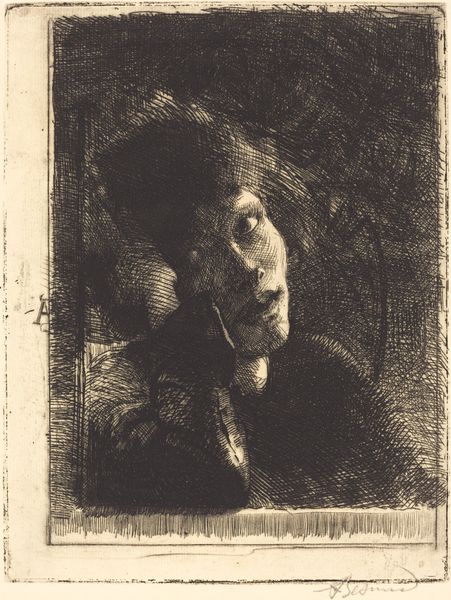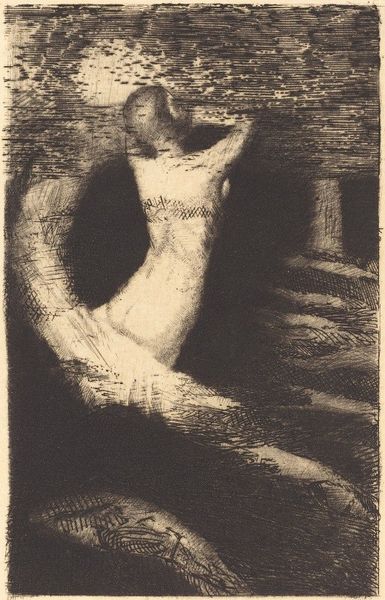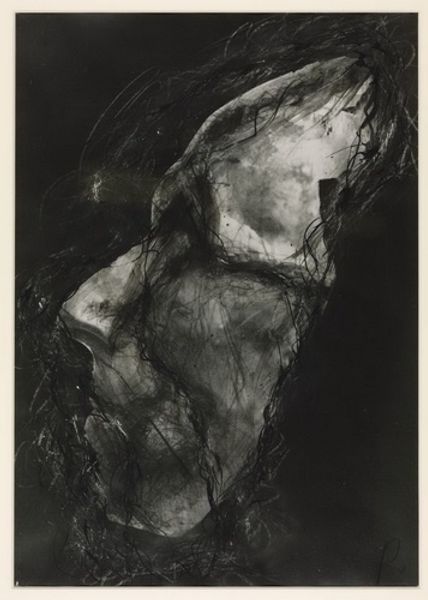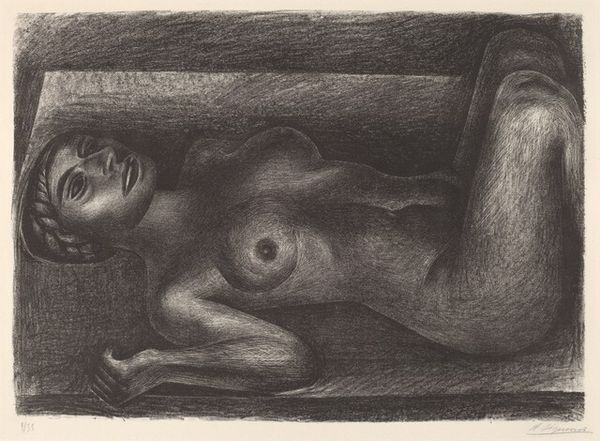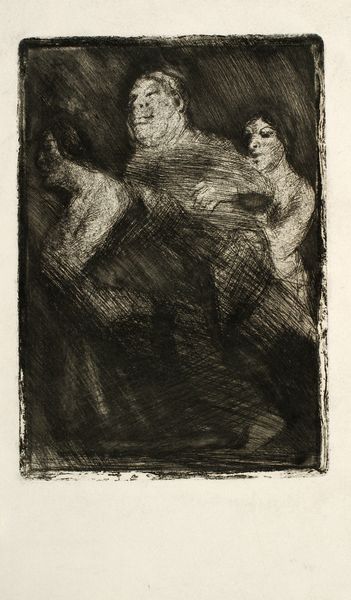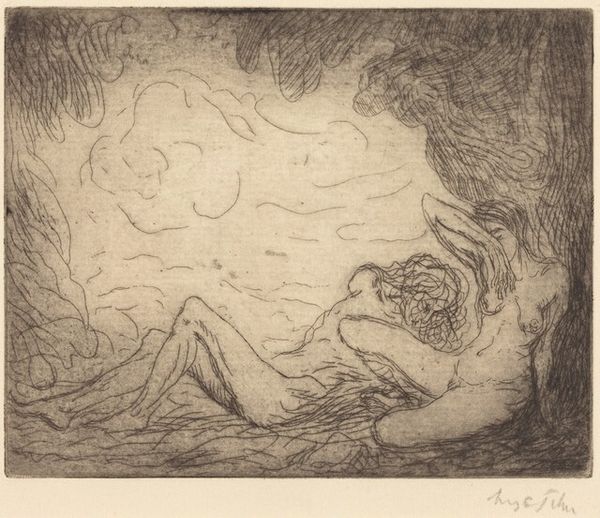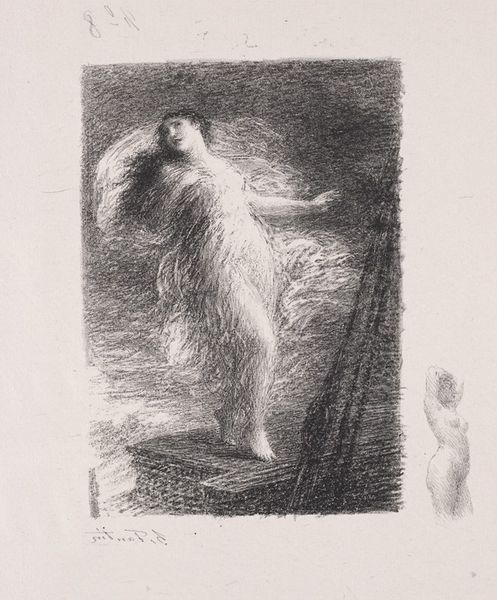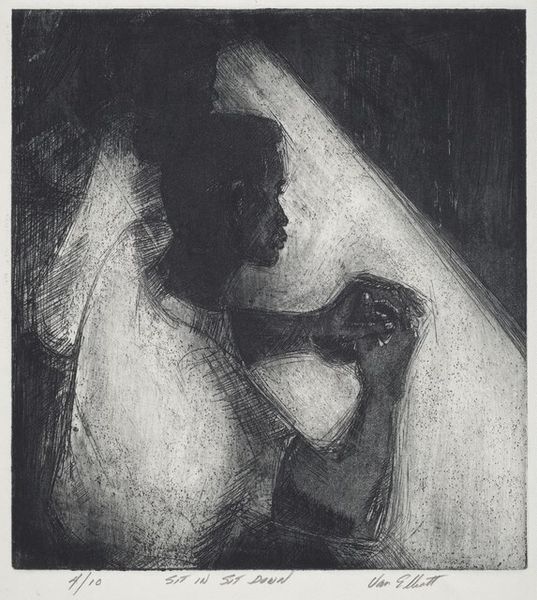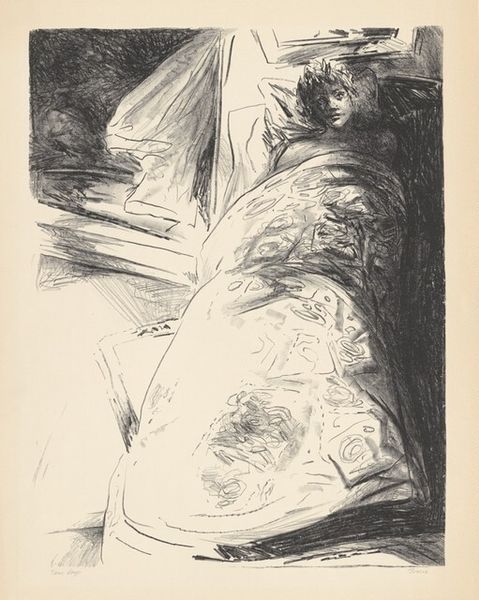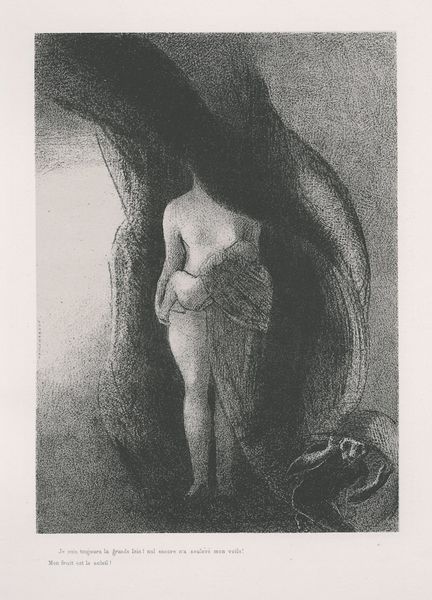
Et le diable qui les seduisait, fut jete dans l’etang de feu et de soufre, ou es la bete et le faux prophete 1899
0:00
0:00
drawing, charcoal
#
drawing
#
charcoal drawing
#
symbolism
#
charcoal
Copyright: Public Domain: Artvee
Editor: This striking charcoal drawing is by Odilon Redon, titled "Et le diable qui les séduisait, fut jeté dans l’étang de feu et de soufre, ou est la bête et le faux prophète," created in 1899. The heavy use of shadow gives it a very dark and unsettling feeling. How should we interpret this work? Curator: Redon created this drawing as part of a series of illustrations inspired by Gustave Flaubert’s *Temptation of Saint Anthony*. We see a fallen figure surrounded by swirling darkness; it depicts the symbolic destruction of evil, reflecting Redon’s engagement with societal anxieties and his own struggles with faith and reason. Consider the politics of imagery at play: how does the use of charcoal and the implied biblical reference shape our understanding of "evil" during that era? Editor: So, it's less about a literal depiction of Hell and more about representing the abstract idea of evil? How would Redon's audience have perceived that message? Curator: Precisely. Redon's work appeared during a period of massive social and political upheaval. The fin-de-siècle was a moment where established ideas came under scrutiny. Therefore, in my view, it isn't necessarily a literal rendering of hell, as he is visualizing internal conflicts through recognizable symbols in order to grapple with them. Editor: It’s fascinating how an artwork can both reflect its time and be ahead of it. Thanks for giving me a broader sense of its cultural context and helping me see it in a new way. Curator: It was my pleasure. Considering the role of socio-political conditions is necessary when it comes to fully grasping an artwork such as this.
Comments
No comments
Be the first to comment and join the conversation on the ultimate creative platform.
